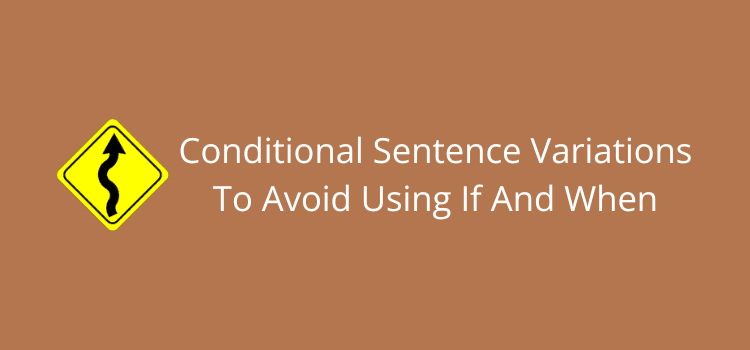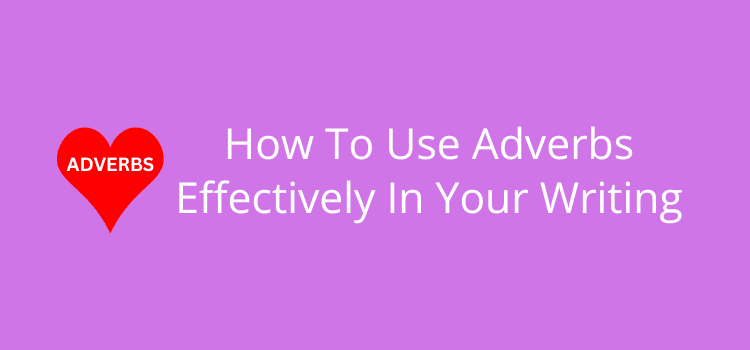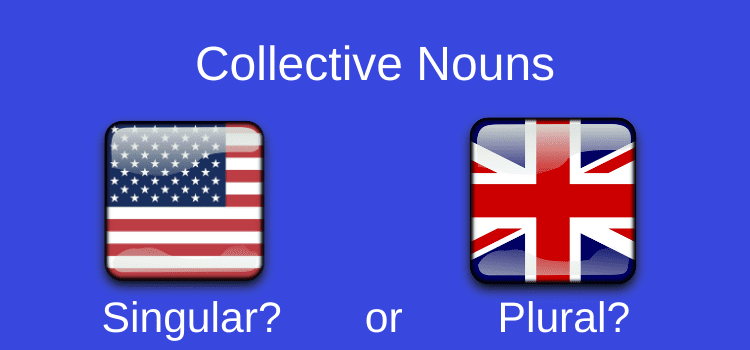
Conditional cause-and-effect sentences can be quite rigid, and that’s where conditional sentence variations can come in handy.
While they are extremely useful, conditionals can become a little tedious if they always begin with if and when.
That’s why having variations at hand can help with style, flow, rhythm, and clarity, and reduce unnecessary repetition.
The best part is that it’s so easy to change conditional structures to suit any situation or type of writing.
Why you should vary conditional sentences
The problem with the five conditional sentence forms is that they all follow the same structure with a condition followed by a result.
Because of this, you can end up with a lot of sentences starting with if or when. However, they do share one similarity in that you can always reverse the two clauses.
While it helps move the if condition clause to the end, you still have to use if or when.
If you are writing informational or advice articles, this can become a problem because you probably use conditional sentences quite frequently.
In fiction, dialogue can often use these types of sentences, so extra variety can help.
The last thing you want is to be repetitive in your writing because readers notice recurring patterns.
That’s why having tools at hand to tackle these sentences can help you avoid repetition, but also be more creative.
Changing your structures will add variety as well as give you options to emphasize different parts of your sentences.
When you combine alternative trigger vocabulary for your conditionals, you can play with the cause, result, or both.
It might sound complicated, but it’s not. It’s simply a matter of replacing if and when with a different word or short phrase.
Tips for using conditional sentence variations
The first tip is to consider the tone you need because some variations work for more formal writing and others for informal texts.
One advantage of using variations is that you can front-load your sentences with the result, which can have more impact.
For academic or professional writing, inversion is particularly effective as it creates variety without losing formality.
The negative form using unless is a simple flip to change almost any sentence.
Some variations are mostly suitable for official texts or business documents, but can be adapted for essays.
Adding emphasis or background information using participial phrases at the start of a sentence can help with context and timing
Using even if it is only a minor change, but it can add a slightly different meaning to a sentence.
Within a paragraph, you can use different structures to prevent repetition if you have more than one conditional.
You have a lot of options, but your choices should always depend on how clear a sentence is. Overly complicated sentences might be a tough read.
Once you are familiar with some options, you can experiment with them to emphasize either the cause or effect in sentences.
For authors, it’s an opportunity to fine-tune dialogue with a few different options.
However, only the simpler alternatives that sound natural work best.
After you read through the list of conditional sentence alternatives to follow, take a note of a few that you think could be useful for your writing style.
Then you can experiment anytime you use a conditional sentence.
15 Conditional sentence options to avoid if and when
You don’t always have to start conditional sentences with if or when.
By having a variety of options, you can make your writing more interesting and precise.
The following examples of conditional sentence variations show you some practical ways to change your conditionals, so you can emphasize either the cause, the result, or both.
Some examples use ‘when’ instead of ‘if’ to reflect different ways conditional sentences can start.
You can apply these alternatives very easily for both creative and informational writing.
1. Should
Example: Should you need more information, please let me know.
(Replacing: If you need more information, please let me know.)
2. Were
Example: Were I in your position, I would reconsider your options.
(Replacing: If I were in your position, I would reconsider your options.)
3. Unless
Example: I won’t attend the meeting unless you confirm the time.
(Replacing: If you don’t confirm the time, I won’t attend the meeting.)
4. Provided (that)
Example: Provided that all conditions are met, the project will proceed.
(Replacing: When all conditions are met, the project will proceed.)
5. As long as
Example: As long as you submit the report by Friday, we’ll consider it.
(Replacing: If you submit the report by Friday, we’ll consider it.)
6. On condition that
Example: On condition that you complete the task, you’ll receive a pass mark.
(Replacing: If you complete the task, you’ll receive a pass mark.)
7. In case
Example: In case of an emergency, call the caretaker.
(Replacing: If there is an emergency, call the caretaker.)
8. Supposing
Example: Supposing you agree to take the position, when can you start?
(Replacing: If you agree to take the position, when can you start?)
9. Even if
Example: Even if the weather is bad, the festival will continue.
(Replacing: If the weather is bad, the festival will continue.)
10. Whether or not
Example: Whether or not you agree, my decision stands.
(Replacing: If you agree or not, my decision stands.)
11. Without
Example: Without your approval, we cannot go any further.
(Replacing: If we don’t have your approval, we cannot go any further.)
12. But for
Example: But for your timely action, the mission would have failed.
(Replacing: If you hadn’t taken timely action, the mission would have failed.)
13. Only if
Example: Only if you complete the form correctly will we process your request.
(Replacing: When you complete the form correctly, we will process your request.)
14. Assuming that
Example: Assuming that the weather improves, we’ll start training tomorrow.
(Replacing: If the weather improves, we’ll start training tomorrow.)
15. Front-load the result
Example: You’ll succeed if you follow the instructions carefully.
(Replacing: If you follow the instructions carefully, you’ll succeed.)
Traps to avoid with these options
When you try ways to vary conditional sentences, the most common error is in complicating sentences to avoid if or when.
Complex constructions may confuse readers or be unsuitable for the level of formality.
Another trap is using too many structures, which can make your writing feel a little disjointed.
Also, be careful if you use conditionals close together, such as in the same paragraph. Keep the style and form reasonably consistent.
Most importantly, check the readability and how the sentences work with those around them. Will it make sense for your readers?
Summary
Learning how to use conditional sentence variations is an easy way to make your writing more varied and informative.
You can experiment with different structures to avoid starting conditionals with if and when, to emphasize the cause, the result, or both, and to avoid repetition.
Trying alternatives like inversion, unless, or participial phrases is a good way to experiment and see what works for you.
But as always in any form of writing, the key is to balance variety with readability. Only choose structures that you know will fit your writing style and audience.
Related Reading: 15 Ways To Avoid Using “I” To Start A Sentence
Share This Article


